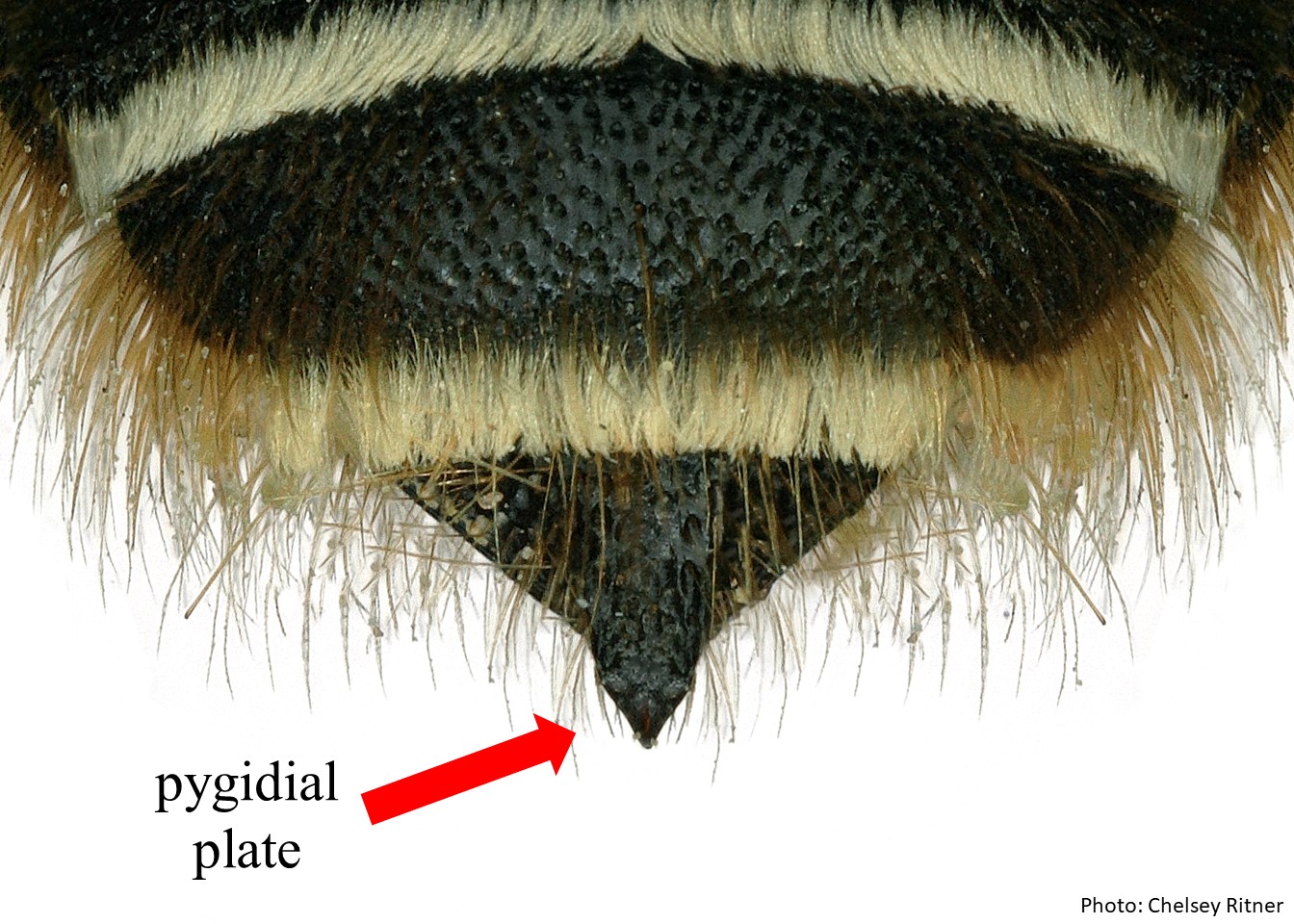Xylocopa (Koptortosoma) is a diverse group of robust, small to large bees, 10 – 30 mm in length, with mahogany to black, weakly metallic integumentintegument:
a tough, protective outer layer
. Males often have yellow maculations on their face and mandibles. They usually have a short, thick, generally pubescencepubescence:
short, fine hair
covering their whole body that can range from black to pale. Their wings tend to be a dark brown to reddish with weak purple iridescence (Hurd and Moure 1963Hurd and Moure 1963:
Hurd, P.D. and J.S. Moure. 1963. A Classification of the Large Carpenter Bees (Xylocopine) (Hymenoptera: Apoidea). University of California Publications in Entomology (Vol. 29). Berkeley and Los Angeles: University of California Press, 365 pp.). X. (Koptortosoma) is a very speciose subgenus and the description above is a general overview of the subgenus; there are species that do not fit this general descriptio
Between 130 (Leys et al. 2002Leys et al. 2002:
Leys, R., S. J. B. Cooper, and M. P. Schwarz. 2002. Molecular phylogeny and historical biogeography of the large carpenter bees, genus Xylocopa (Hymenoptera: Apidae). Biological Journal of the Linnean Society 77: 249-266.) and 196 (Hannan et al. 2012Hannan et al. 2012:
Hannan, M. A., A. Alqarni, A. A. Owayss, and M. S. Engel. 2012. The large carpenter bees of central Saudi Arabia, with notes on the biology of Xylocopa sulcatipes Maa (Hymenoptera, Apidae, Xylocopinae). ZooKeys 201(201): 1-14.) species are listed in Xylocopa (Koptortosoma). Leys et al. (2002) found this taxon to be paraphyletic, but a new classification system has not yet been widely accepted.
Xylocopa (Koptortosoma) is distributed mostly across Africa and southern Asia, but members can also be found in Southeast Asia, Taiwan, Japan, Indonesia, the Philippines, and Australia (Hurd and Moure 1963Hurd and Moure 1963:
Hurd, P.D. and J.S. Moure. 1963. A Classification of the Large Carpenter Bees (Xylocopine) (Hymenoptera: Apoidea). University of California Publications in Entomology (Vol. 29). Berkeley and Los Angeles: University of California Press, 365 pp.; Michener 2007Michener 2007:
Michener, C.D. 2007. The Bees of the World (2nd ed.). Johns Hopkins University Press, Baltimore and London, 953 pp.).
<a data-cke-saved-href="https://www.discoverlife.org/mp/20m?w=1200&kind=Xylocopa+calens,Xylocopa+caffra,Xylocopa+albiceps,Xylocopa+ruficeps,Xylocopa+bryorum,Xylocopa+aestuans,Xylocopa+aruana,Xylocopa+philippinensis" href="https://www.discoverlife.org/mp/20m?w=1200&kind=Xylocopa+calens,Xylocopa+caffra,Xylocopa+albiceps,Xylocopa+ruficeps,Xylocopa+bryorum,Xylocopa+aestuans,Xylocopa+aruana,Xylocopa+philippinensis" _blank"="">
Distribution map generated by Discover Life -- click on map for details, credits, and terms of use.
Most of Xylocopa (Koptortosoma) are generalist pollinators including of agricultural crop species. Native Australian species were suggested as pollinators for tomatoes grown in Australia, rather than introducing bumble bees (Bombus) into the area (Hogendoorn et al. 2000Hogendoorn et al. 2000:
Hogendoorn, K., Z. Steen, and M. P. Schwarz. 2000. Native Australian carpenter bees as a potential alternative to introducing bumble bees for tomato pollination in greenhouses. Journal of Apicultural Research 39: 67-74.).
(modified from Michener 2007Michener 2007:
Michener, C.D. 2007. The Bees of the World (2nd ed.). Johns Hopkins University Press, Baltimore and London, 953 pp.)
 without subapicalsubapical:
without subapicalsubapical:Xylocopa (Koptortosoma) may be confused with members of X. (Mesotrichia). X. (Koptortosoma) can be distinguished by the flat scutellumscutellum:
shield shaped plate behind scutum with a sharp-edged truncation that extends beyond the metanotummetanotum:
the posterior dorsal segment of the thorax, behind the scutellum
and the male tegulategula:
the usually oval, small shield-like structure carried at the extreme base of the wing where it attaches to the body, which are unmodified and not elongate (Michener 2007Michener 2007:
Michener, C.D. 2007. The Bees of the World (2nd ed.). Johns Hopkins University Press, Baltimore and London, 953 pp.).
Reported nesting sites for Xylocopa (Koptortosoma) include bamboo, Banyan trees, Eucalyptus saplings, orange trees (Capparis mitchelli), palm trees, and tea tree (Camellia theae) (Hurd and Moure 1963Hurd and Moure 1963:
Hurd, P.D. and J.S. Moure. 1963. A Classification of the Large Carpenter Bees (Xylocopine) (Hymenoptera: Apoidea). University of California Publications in Entomology (Vol. 29). Berkeley and Los Angeles: University of California Press, 365 pp.).
There are no known invasives.
Hannan, M. A., A. Alqarni, A. A. Owayss, and M. S. Engel. 2012. The large carpenter bees of central Saudi Arabia, with notes on the biology of Xylocopa sulcatipes Maa (Hymenoptera, Apidae, Xylocopinae). ZooKeys 201: 1-14.
Hogendoorn, K., Z. Steen, and M. P. Schwarz. 2000. Native Australian carpenter bees as a potential alternative to introducing bumble bees for tomato pollination in greenhouses. Journal of Apicultural Research 39: 67-74.
Hurd, P.D. and J.S. Moure. 1963. A Classification of the Large Carpenter Bees (Xylocopine) (Hymenoptera: Apoidea). University of California Publications in Entomology (Vol. 29). Berkeley and Los Angeles: University of California Press, 365 pp.
Leys, R., S. J. B. Cooper, and M. P. Schwarz. 2002. Molecular phylogeny and historical biogeography of the large carpenter bees, genus Xylocopa (Hymenoptera: Apidae). Biological Journal of the Linnean Society 77: 249-266.
Michener, C.D. 2007. The Bees of the World (2nd ed.). Johns Hopkins University Press, Baltimore and London, 953 pp.